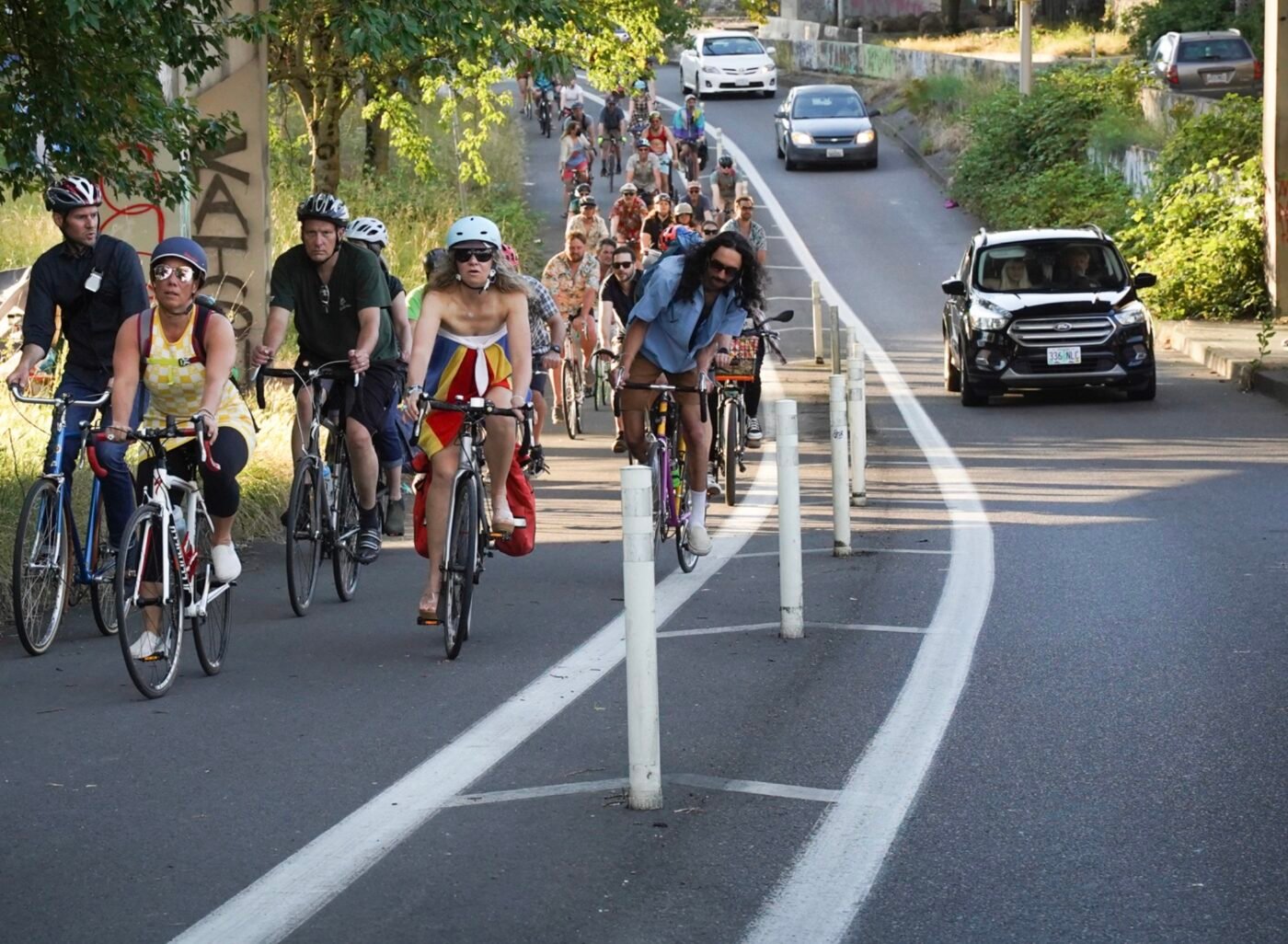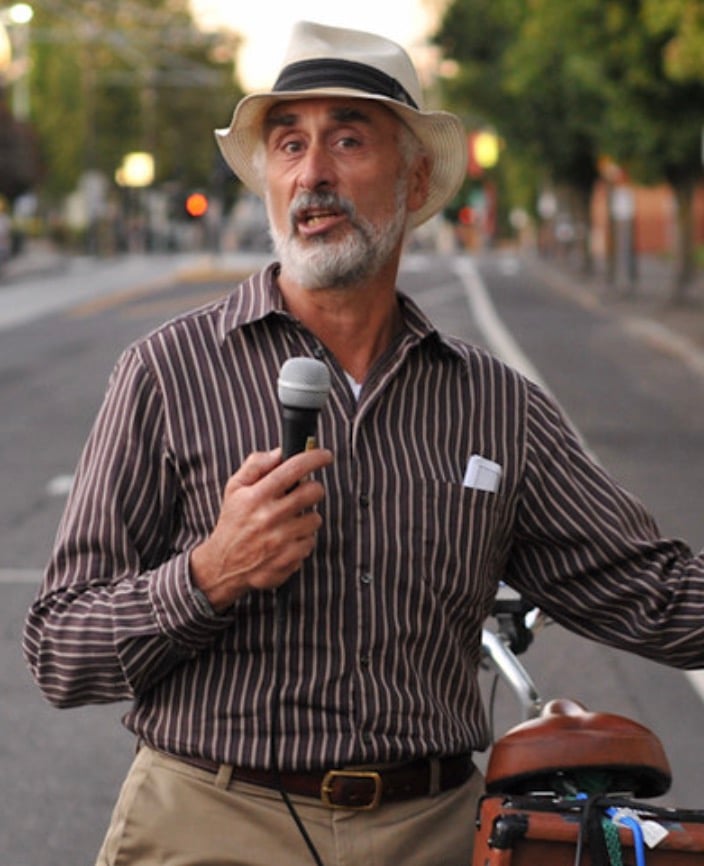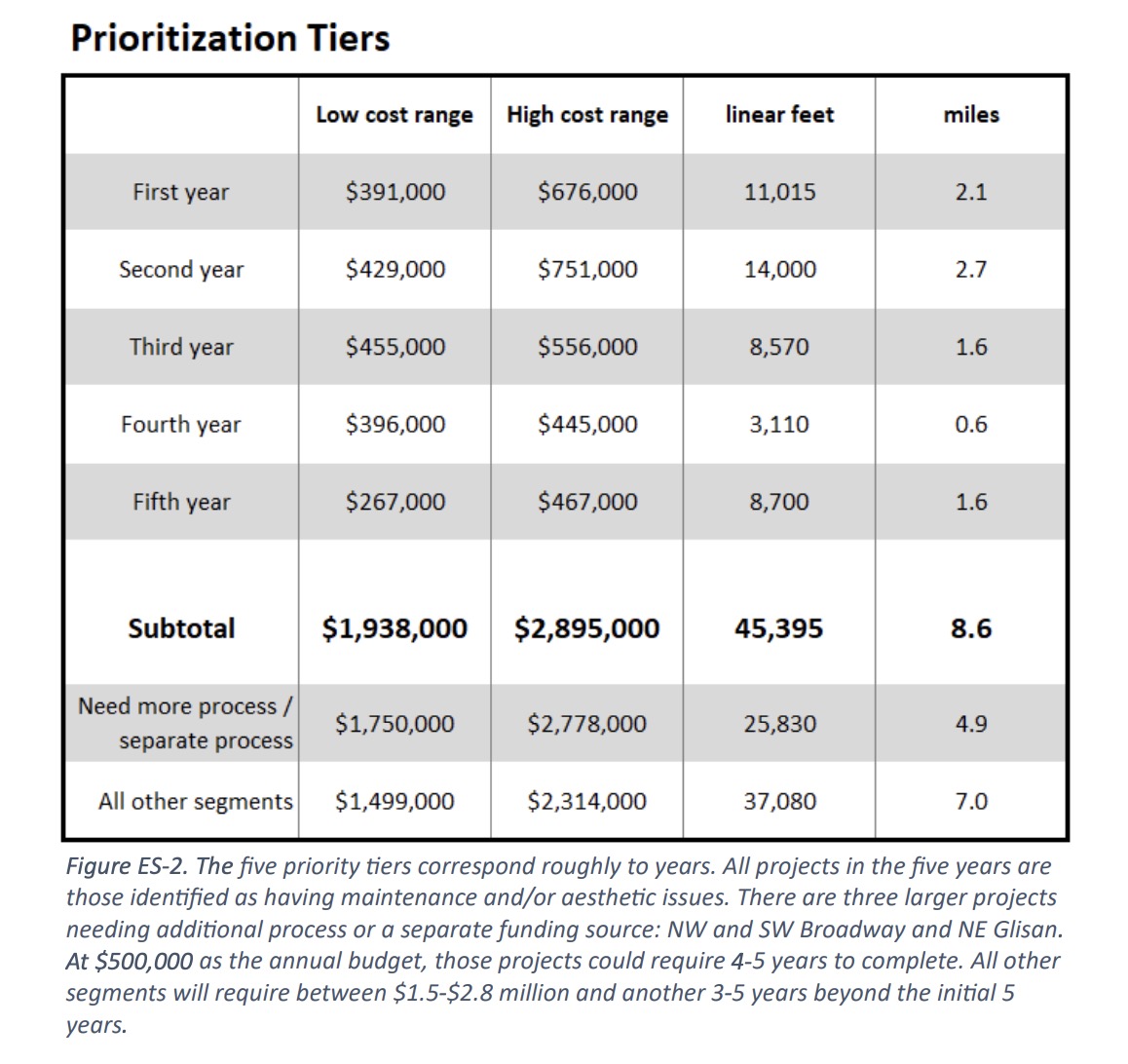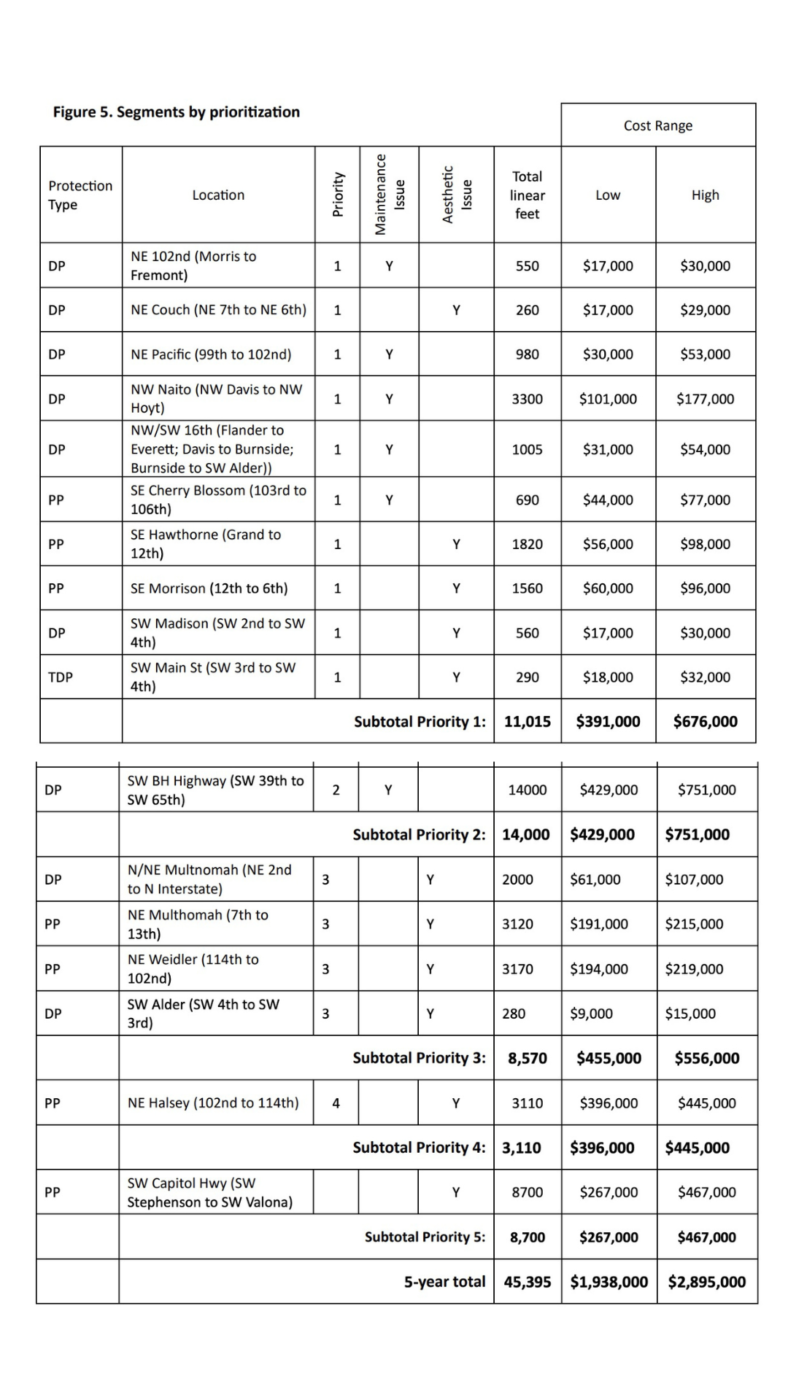
“This is something a lot of folks have been asking for.”
— Roger Geller, PBOT
The City of Portland’s transportation bureau is on a mission to improve the quality of existing protected bike lanes. At the monthly meeting of the Portland Bureau of Transportation Bicycle Advisory Committee Tuesday night, City Bicycle Coordinator Roger Geller said he estimates that every mile of protected bike lane currently built with just paint and plastic posts will be “hardened” with concrete within the next five years.
PBOT has promised for years to make its paint and plastic-only protected bike lanes more robust and permanent, but this is the first time we’ve seen and heard of real policy and funding devoted to it.
“This is something a lot of folks have been asking for,” Geller said at last night’s meeting.
But despite Geller’s comment and a clear chorus from the community that plastic and paint should never be considered “protection,” official documents he shared last night say the two reasons for the projects are maintenance costs and aesthetic concerns.
As I shared in a recent post about why PBOT has removed some concrete traffic calming barrels, Geller said replacing uprooted plastic “delineator posts” has become a thorn in the side of city maintenance workers.
“Our crews are having to go out and replace the delineator posts frequently. And, you know, there’s much better things that they could be doing with their time,” Geller said. And like I’ve been saying for many years, having a bunch of battered wands littering lanes reeks of government waste and incompetence and shows our city doesn’t take cycling seriously.
When it comes aesthetics, a May 2024 PBOT memo titled, Prioritizing “hardening” protected bicycle lanes, makes the case:
“We borrow much from the Dutch — builders of the world’s best bikeways and bikeway networks. They have five considerations for bikeways: safety, comfort, directness, network cohesion and attractiveness. We have generally fallen short on attractiveness and have received deserved criticism as a result. While delineator posts are affordable and allow quick implementation, they are criticized as Portland not putting its best foot forward, especially in commercial districts.”
Geller’s comments last night prove PBOT is finally ready to build more serious cycling infrastructure. He says the bureau will put about $500,000 per year to the effort to harden its 20.5 lane miles of protected bike lanes with concrete curbs*. PBOT says the cost range is likely to be between $5 and $8 million for all 20.5 miles. (See full list of projects below.)
(*Note this initiative will not replace the plastic posts used on the Burnside Bridge or on SE Stark Street because those are in line for separately funded projects — the County’s Earthquake Ready Burnside Bridge project and PBOT’s Outer SE Stark project. And the 28th and 21st Avenue overcrossings of I-84 will also remain plastic posts and curbs because of PBOT’s policy to only glue down materials on bridge structures, “so as to not puncture the skin and allow water to penetrate to the super structure” (according to the PBOT memo).)
PBOT completed an audit to prioritize where to focus. They came up with 8.6 miles of bike lanes that will be hardened in the next five years at a total cost of between $1.9 and $2.9 million. These segments were chosen because they’ve been flagged for maintenance and/or aesthetic problems and they don’t require any additional public process to move forward with. The first two projects slated to begin this year will be NE Pacific between 99th and 102nd and NW Naito between Davis and Hoyt. The remaining 12 miles (which includes NW and SW Broadway and NE Glisan) need more process and funding. At this point in time, those and other segments are slated to be completed 3-5 years beyond the first 5-years currently planned.
Geller was resolute during his presentation Tuesday night, but also made it clear this is a new process for PBOT and they will likely refine the approach as they go along (a lot of the cost and timing has to do with the type of equipment contractors have and whether the work is done by PBOT or private crews). “Hopefully within five years or sooner, depending on the availability of funding,” Geller said. “We’ll be able to convert all of our bike lanes that are just delineator posts into some level of concrete.”
Bicycle Advisory Committee Vice-chair (and noted cycling advocate with BikeLoud PDX) Joe Perez said 20-plus miles of hardened bike lanes over fine years, “Would be amazing to see happen.” “It seems like this is an inexpensive solution to get us to 25% of trips by bicycle by 2030. Kudos. Keep it up,” Perez added.
Below is a list of the projects, estimated costs, and the year they’re expected to be completed:
###






